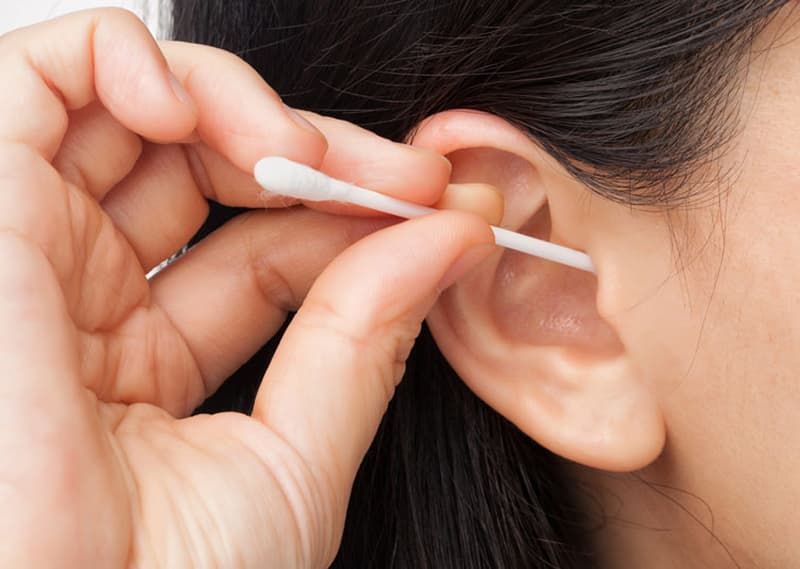Why Cotton Swabs Endanger Your Ears
Cotton swabs, otherwise known as Q-tips, have been available on store shelves in the form of general-use cleaning tools for decades. They are frequently the default go-to option when someone believes that their ears are clogged with wax. The practice appears harmless: a few turns into the ear canal, some pressure, and whatever seems to be extraneous debris is dislodged. Nevertheless, ear experts always caution against such a move. Instead of offering a soothing cleaning, inserting a cotton swab into the ear canal can release a chain of disease from wax impaction to permanent hearing loss.

The Ear’s Clever Self-Cleaning System
The human ear has an in-built cleaning mechanism. Earwax, also known as cerumen, is secreted in the outer part of the canal and slowly migrates outward due to natural movement like chewing and speaking. Doing so traps dust, bacteria, and dead skin and removes them from the canal. Left alone, this wax typically flakes off at the ear opening and requires only a gentle wipe on a cloth. Insertion of a swab disrupts this conveyor-belt action. Rather than pulling out, the swab usually forces it deeper into the canal pushing it against the canal and sometimes the eardrum itself. This may cause a situation of wax impaction where hardened plugs block the sound, produce ear fullness and may at times lead to pain or dizziness.
From Minor Scratches to Major Perforations
The skin lining the ear canal is thinner than a sheet of paper. Even the soft friction of a cotton swab causes minute abrasions, exposing tissue to infection. The risk increases when there is an unintended hand slip. A swab penetrated too deep might puncture the eardrum, a sensitive membrane that forms a barrier between the outer ear and the middle ear. These perforations may induce acute pain, bleeding, and temporary deafness. In worse instances, the ossicles which are the three small bones that transmit sound get hurt. Trauma to this chain can cause a non-transient conductive hearing loss or chronic ringing in the ears.
Infection and Latent Risk
Swabs also risk infection in addition to physical trauma. Introduction of bacteria or fibers into the moist canal environment has the potential to trigger inflammation known as otitis externa, also known as swimmer’s ear. Repeated rubbing by cotton tips also causes disruption of the protective ear canal seal, encouraging bacterial or fungal overgrowth. In some but reported instances, the head of the cotton separates from its handle when applied and becomes lodged inside, becoming a foreign body that needs to be extracted by a technician. These instances transform what was initially a standard cleaning process into an acute medical condition.
How Common Are the Injuries?
Despite decades of criticism by doctors, more than half of adults still use cotton swabs for ear cleaning, as evidenced by surveys. Cotton-tip applicators are a leading cause of traumatic eardrum perforation in children’s emergency rooms. Adults aren’t safe either, as professionals actively treat cases of impaction of the wax or chronic infection directly caused by the repeated use of swabs. It is found that those who habitually insert cotton tips are much more likely to develop ear pain, plugged feeling, or recurring infections compared to those who do not insert cotton tips. These figures are remarkable because it is believed that many of these injuries could be avoided with a mere change in practice.
Safer Alternatives for Ear Care
The most effective advice of ear, nose, and throat specialists is absolute: don’t put anything smaller than your elbow into your ear canal. The optimal option for most individuals is to let the body’s natural process work uninhibited. If visible wax accumulates near the opening, it might be brushed away using a wet washcloth or tissue. For individuals with recurrent blockage, mineral oil, glycerin, or dilute hydrogen peroxide drops to loosen hard plugs may be instilled to loosen hard plugs. A warm water irrigation then can be helpful, provided there has not been eardrum perforation in the past. If symptoms persist—such as pain, hearing loss, or pressure feeling—the ideal treatment is professional removal. Doctors use particular instruments or suction by direct vision with little risk of trauma or infection.
 Disclaimer:
Disclaimer:
The content provided on our blog site traverses numerous categories, offering readers valuable and practical information. Readers can use the editorial team’s research and data to gain more insights into their topics of interest. However, they are requested not to treat the articles as conclusive. The website team cannot be held responsible for differences in data or inaccuracies found across other platforms. Please also note that the site might also miss out on various schemes and offers available that the readers may find more beneficial than the ones we cover.
Featured Articles
-
 Automotive
AutomotiveThe Best Car Gadgets to Give Your Driving Experience an Edge
-
 Finance
FinanceShould You Hire Identity Theft Protection Services to Safeguard Your Finances?
-
 Health & Wellness
Health & WellnessWhich Model of Toothbrush is Best for Me?
-
 Finance
FinanceIs Another Economic Recession Looming on the Horizon? How Regular Citizens Can Get Ready?
-
 Health & Wellness
Health & WellnessEffective Homemade Detox Drinks for Weight Loss and Wellness
-
 Home & Garden
Home & GardenBenefits of Memory Foam Mattresses and Best Ones to Look Out For




